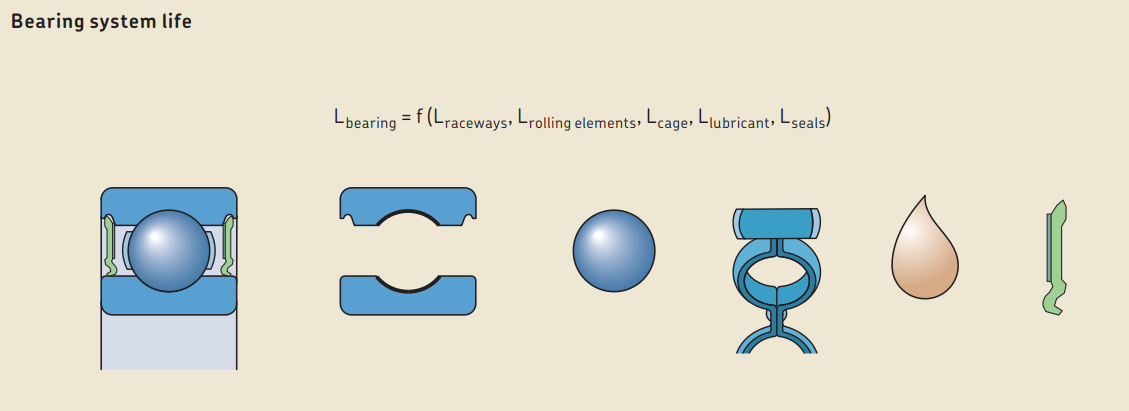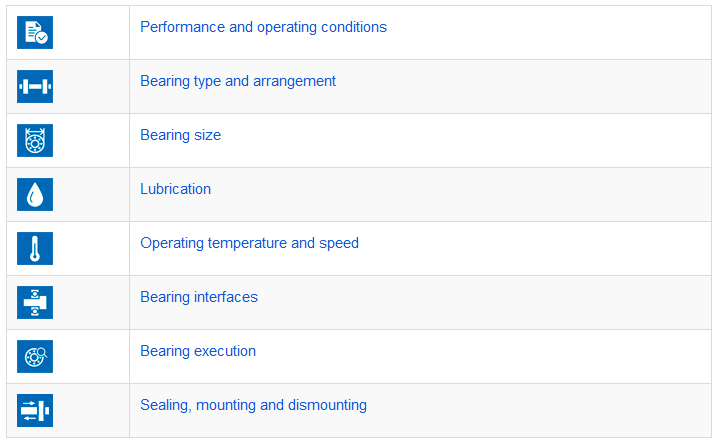Machine design engineers and maintenance engineers have to deal with bearings in their rotating machines at different stages, first for the selection and later for maintenance and troubleshooting. The main criteria for selecting the bearings have been calculation of bearing life according to the ISO 281 basic rating life formula:
L10=(C/P)p . 100000/60.n
(C is the dynamic load rating and P is the equivalent load applied to the actual bearing, and p is the exponent depending on ball or rollers, and n is the RPM for constant speed machines).
What it is many times forgotten, is that this is a probability calculation and does not express the "life" of any single bearing. The probability is set at 90% survival, or in other words, if a significant number of bearings are exposed to the same operating conditions, 90% of them will reach or surpass that calculated "life" expectancy, many will last longer and it also means that 10% will not reach that defined "life.
But it is important to remember that the complete bearing can be viewed as a system in which the life of each component i.e. rolling elements, raceways, cage, lubricant and seals, when present, contributes equally and in some cases dictates the effective endurance of the bearing. Basically, the life of a bearing is determined by the life of the different components that make up the bearing system.

The ISO 281 bearing life calculation only accounts for the raceway fatigue life, therefore not including cage, lubricant or seals. In some cases some service life estimations can be made for this other elements but they are not integrated or standardized in ISO.
On top of that, there are other considerations to be made when selecting the proper bearing for an application that go beyond calculating its theoretical life. For example, are there special mounting or dismounting requirements? Are there special environmental considerations? Etc.
In order to have a more comprehensive process, SKF has introduced a revised methodology for bearing selection that guides the engineer through the necessary steps to have a robust and reliable bearing application.
When selecting bearings for any purpose, ultimately you want to be certain of achieving the required level of equipment performance – and at the lowest possible cost. Robustness is also very important because the conditions in which your equipment is assembled, operated and maintained may not be precisely known and may, in fact, vary over time.
In addition to the bearing rating life, there are key factors you must consider when putting together the bearing specifications for an application, including:
- lubricant and supply method
- shaft and housing fits
- bearing clearance class
- cage material and guidance
- dimensional stability
- precision requirements
- bearing sealing
- mounting method and maintenance
These elements have been organized into a structured process and represented by icons which are easy to follow in the online catalogue:
The process provides a straightforward step-by-step approach that shows the general relationship between each step. By clearly defining and naming the steps in this way, it should be easier to find information on a specific topic. In reality, however, you will find inter-dependencies that require you to loop back and forth between the steps.
Interested in finding out more about the bearing selection process?
Explore more in detail on SKF web page here.
SLS is the local authorized distributor and a certified maintenance partner (CMP) of SKF. SLS and SKF go the extra mile to provide reliability services beyond identifying machinery issues and work side by side with you to achieve your maintenance goals.
To find out more about the CMP Program, please click here.







